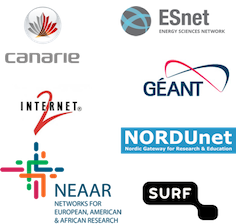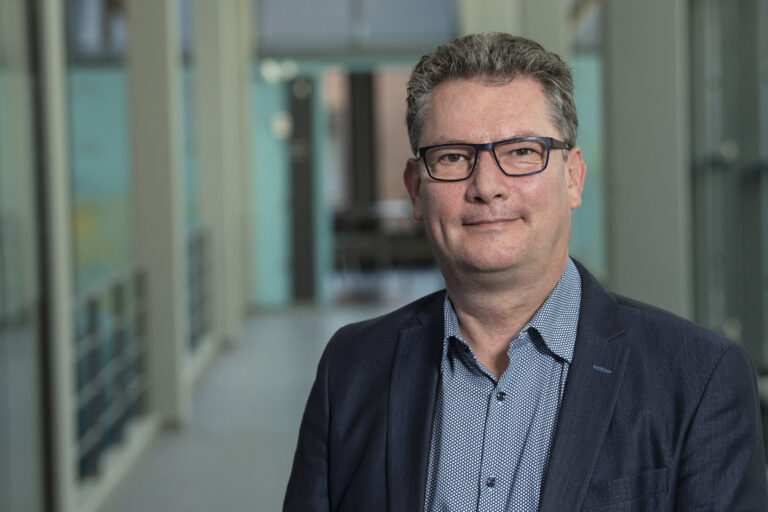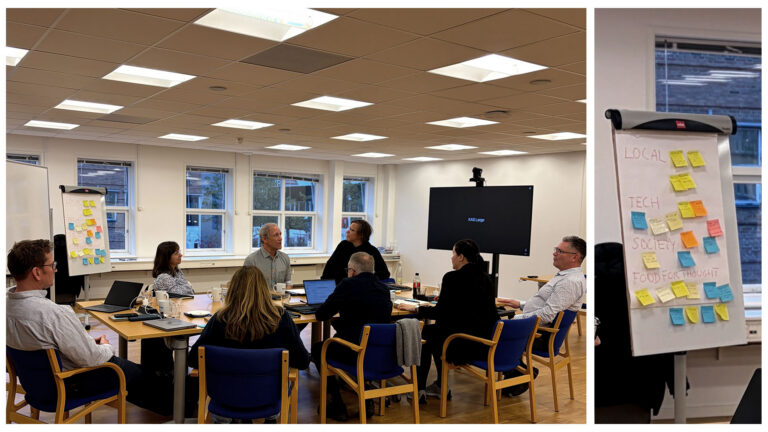MoU secures additional bandwidth and resilience for research & education
Amsterdam, Berkeley, Bloomington, Copenhagen, Ottawa, Utrecht, Washington D.C., April 2018 – Addressing the exponentially growing needs of international science collaborations, connectivity providers for research and education (R&E) continue to find new ways to join forces.
In 2016, a six-party strong collaboration between North American and European R&E network providers secured a record-breaking 640 Gbit/s bandwidth for R&E across the North Atlantic. This alliance has now strengthened its cooperation to bring even more bandwidth, resiliency, and redundancy to networking for research and education, supporting global research collaborations that are advancing knowledge to help solve our most pressing problems.
MoU signed
A Memorandum of Understanding (MoU) has been signed between the partners involved in the Advanced North Atlantic (ANA) collaboration (CANARIE, ESnet, GÉANT, Internet2, NORDUnet, and SURF) and the National Science Foundation (NSF)-funded Networks for European, American, and African Research (NEAAR) Project. The MoU paves the way for a future cooperative partnership offering a combined capability to the R&E community that far exceeds what any single organization can provide.
The collaboration is based on capacity sharing, reciprocal backup agreements, and joint operations of high-speed 100 Gbit/s interconnects through Global R&E Exchange Points (GXPs). Moreover, with the additional NEAAR link now available, the transatlantic R&E bandwidth has risen to 800 Gbit/s, with the new link further strengthening its resilience.
The MoU between the ANA collaboration and the NEAAR Project takes global collaboration in R&E networking to a new and unprecedented level of interaction and resource sharing, in order to meet the international R&E community’s increasing need for high-speed global network connectivity.
The partners
The Advanced North Atlantic (ANA) collaboration started in 2012 as a technology project to challenge the market to deliver 100 Gbit/s trans-Atlantic circuits. Since then, it has grown into a strong collaboration between six R&E networking organizations from North America (CANARIE, ESnet, and Internet2) and Europe (GÉANT, NORDUnet, and SURF), with a steering group and working groups on operations, technology, cost sharing and legal.
The NEAAR Project is a cross-organizational initiative providing services and bandwidth to connect researchers within the United States with their counterparts in Europe and Africa. Indiana University jointly leads the NEAAR collaboration with GÉANT, the European research and education network (REN), and with the African regional RENs. In addition to a 100 Gbit/s lambda between the United States and Europe, the NEAAR Project facilitates science engagement with researchers throughout Europe and Africa.
New level of collaboration
The ANA collaboration has inspired similar initiatives in other regions. Looking to the future, the ANA collaboration aims to inspire more intercontinental collaborations and will work with the telecommunications industry to create powerful, resilient and sustainable intercontinental transmission systems for research and education.
Quotes section:
Howard Pfeffer, President and CEO, Internet2: “We believe collaboration has been, and will continue to be, the core mission of supporting global research and education. All the partners involved in this collaboration continue to demonstrate their unique ability to work collectively toward a shared vision. Internet2 looks forward to continuing this global effort in support of advancing knowledge and scholarship.”
René Buch, CEO, NORDUnet: “Collaboration though projects like ANA is the cornerstone in the creation of a global R&E infrastructure. Joining resources both financially and organizationally is the only viable way forward for the NRENs to provide researchers and students with a global infrastructure that has sufficient bandwidth and reach to support research and education, not only today but also in the future. NORDUnet has a strong commitment to this common goal and is investing significant resources facilitating this paradigm on a global scale.”
Inder Monga, Executive Director, ESnet: “This private-public collaboration has been exemplary in proving how multiple partners, in different countries, can work toward the common good for the science, research and education community. We welcome NEAAR as ANA’s new partner and continued collaborative efforts on science engagement across continents.”
Erwin Bleumink, Member, SURF Board: “Research and educational institutions are increasingly using large research facilities, educational content, and e-infrastructure services delivered by providers or fellow institutions all over the world. It is essential to ensure that our network is connected to the rest of the world. Therefore, we’re proud to work with our global partners to design and deliver a Global Network Architecture. The MoU between ANA and NEAAR show that the principles defined in this architecture lead to successful collaborations.”
Jim Ghadbane, President and CEO, CANARIE: “We are strong proponents of the power of collaborations to build and evolve the network infrastructure that enables global multidisciplinary research and innovation. We look forward to continuing to strengthen this partnership and to applying its principles to future collaborations.”
Erik Huizer, CEO, GÉANT: “The ANA collaboration is a prime example of how international research networks collaborate and share resources to obtain the best possible performance for research and education. GÉANT is proud to be part of that collaboration which delivers unprecedented data capacity to the European research and education community. We are very pleased to be part of the collaborative model of sharing capacity and increasing resilience through reciprocal back-up agreements which further strengthen GÉANT´s global reach. We welcome NEAAR as ANA´s new MoU partner.”
Jennifer Schopf, Principal Investigator, NEAAR Project: “We are pleased to be the latest partner in this wide-reaching collaboration. It is through partnerships and collaborations that we can best support R&E end users efficiently and reliably. We look forward to being a part of this team of community leaders.”
Global Collaboration (as alternative to the boiler plates section):
The global ecosystem of Research & Education Networks has brought forward a number of initiatives that emphasizes the way these networks work together. Two prominent ones are:
- In The Field Stories: https://www.inthefieldstories.net/
- Global Network Architecture: https://gna-re.net/
Boiler plates section:
Internet2: Internet2® is a non-profit, member-driven advanced technology community founded by the nation’s leading higher education institutions in 1996. Internet2 serves 328 U.S. universities, 60 government agencies, 43 regional and state education networks and through them supports more than 94,000 community anchor institutions, over 900 InCommon participants, and 68 leading corporations working with our community, and 61 national research and education network partners that represent more than 100 countries.
Internet2 delivers a diverse portfolio of technology solutions that leverages, integrates, and amplifies the strengths of its members and helps support their educational, research and community service missions. Internet2’s core infrastructure components include the nation’s largest and fastest research and education network that was built to deliver advanced, customized services that are accessed and secured by the community-developed trust and identity framework.
Internet2 offices are located in Ann Arbor, Mich.; Denver, Colo.; Washington, D.C.; and West Hartford, Conn.
For more information, visit www.internet2.edu or follow @Internet2 on Twitter.
NORDUnet: NORDUnet is a collaboration between the National Research and Education Networks (NRENs) of the five Nordic countries; Denmark (DeIC), Iceland (RHnet), Norway (UNINETT), Sweden (SUNET), and Finland (Funet). The Nordic region (five countries and three autonomous areas) has a population of 25 million, 9 official languages, and a strong tradition of collaboration. Together, the countries form the world’s 11th largest economy.
NORDUnet was founded in 1985 as a result of the NORDUNET programme and is jointly owned by the five Nordic countries. Each of the Nordic NRENs has a seat on the board and share the base costs according to the country GDP.
NORDUnet operates a world-class network and e-infrastructure service for the Nordic R&E community. The five NRENs develop and operate the national research network infrastructures, connecting more than 400 research & education institutions with more than 1.2 million users.
Together with the Nordic NRENs, NORDUnet work continuously to further develop leading edge services and to push the technology envelope. NORDUnet provides global network connectivity and is a key contributor to international partnerships such as GÉANT, GLIF, and GLORIAD.
It is the vision of NORDUnet to be the NORDIC Gateway for Research and Education, by providing a common world-class network infrastructure, services, support and collaboration platform for the Nordic NRENs and research and education communities and by facilitating other common e-Infrastructures as requested by the Nordic national e-Infrastructure stakeholders.
More information at: https://www.nordu.net/
ESnet: The Energy Sciences Network (ESnet) is a high-performance network that spans the U.S. and provides direct connections to Europe in support of science discovery. Funded by the Department of Energy and managed by Lawrence Berkeley National Laboratory, ESnet is operated and optimized for data-intensive science applications. ESnet connects more than 50 DOE research sites, including supercomputing facilities and major scientific instruments. ESnet also connects to more than 200 research and commercial networks. Together, ESnet supports tens of thousands of DOE-funded scientists around the world on innovative research in earth science, life science, cosmology and physics, material sciences, computational science and many other areas. ESnet is a DOE Office of Science User Facility.
For more information: www.es.net
SURF: SURF is the collaborative ICT organisation for Dutch education and research. SURF ensures that students, lecturers and researchers in education and research have access to the best possible ICT resources on favourable terms for the purpose of top-level research and talent development in national and international collaboration. SURF therefore develops, innovates and operates an advanced, federated e-infrastructure in conjunction with the institutions. SURF also organises demand aggregation, collaboration and knowledge sharing in relation to ICT themes for the member institutions. SURF has grouped its activities into three working companies: SURFmarket, SURFnet and SURFsara.
More information at: https://www.surf.nl/en/homepage
CANARIE: CANARIE strengthens Canadian leadership in science and technology by delivering digital infrastructure that supports world-class research and innovation.
CANARIE and its twelve provincial and territorial partners form Canada’s National Research and Education Network. This ultra-high-speed network connects Canada’s researchers, educators and innovators to each other and to global data, technology, and colleagues.
Beyond the network, CANARIE funds and promotes reusable research software tools and national research data management initiatives to accelerate discovery, provides identity management services to the academic community, and offers advanced networking and cloud resources to boost commercialization in Canada’s technology sector.
Established in 1993, CANARIE is a non-profit corporation, with the majority of its funding provided by the Government of Canada.
For more information, please visit: canarie.ca.
GÉANT: GÉANT is Europe’s leading collaboration on network and related infrastructure and services for the benefit of research and education, contributing to Europe’s economic growth and competitiveness. The organisation develops, delivers and promotes advanced network and associated e-infrastructure services, and supports innovation and knowledge-sharing amongst its members, partners and the wider research and education networking community.
For more information, visit www.geant.org.
NEAAR Project: The Networks for European, American, and African Research (NEAAR) collaboration provides services and bandwidth connecting researchers in the US with their counterparts in Europe and Africa. Indiana University (IU) jointly leads the NEAAR collaboration with GÉANT, the European research and education network (REN), and the African regional RENs. NEAAR also collaborates in the US with Internet2 and the Energy Sciences Network (ESnet). NEAAR supports circuits and network services between the US East coast and Europe, in addition to extensive training and science engagement activities to support US collaborations with researchers in Europe and Africa. Through its extensive regional partnerships, NEAAR has the potential to reach R&E communities in over 80 countries across three continents.
For more information: http://internationalnetworks.iu.edu/projects/NEAAR/index.html




